Indoor plants help create comfort indoors. However, many refuse to start them, explaining this by a lot of employment. Florists with little experience as an alternative suggest planting cacti as a plant, the care of which in home conditions not a big deal.
The unpretentiousness of cacti is the biggest stereotype, which is very far from responsibility. The natural life reserve of these plants is not infinite, as many may think.
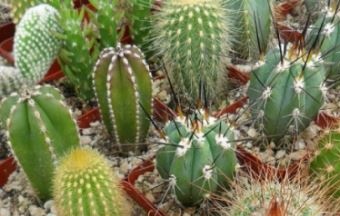
Content
Cactus Features
Today, about 300 species and varieties of this plant are known. The uniqueness of cacti is that not all of them look the same. For example, representatives of the pereskiev subfamily have the usual leaves and stem. Opuntia foliage is found only on young shoots, but cereus flowers are cacti, as we used to see them with thorns.
Specialists also point to such features:
- the stem is responsible for photosynthesis in this plant, and the whole process of the active process of carbon dioxide and oxygen evolution occurs at night;
- cacti, as can be seen in the photo, are distinguished not only by the name, but also by the thorns. They can be hairy, bristly, needle-shaped, awl-shaped and club-shaped.
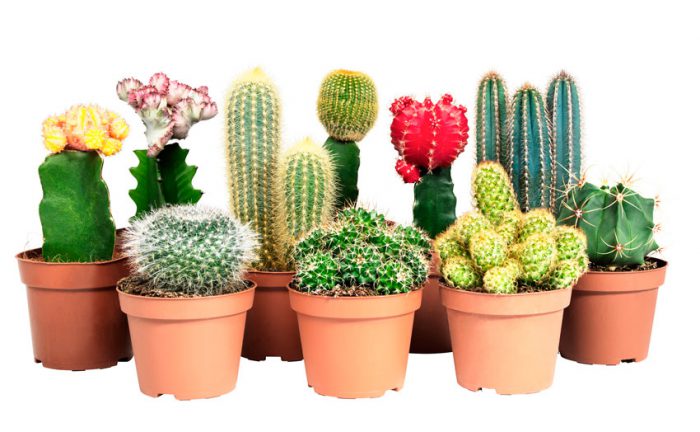
Unlike many houseplants, cacti have berries, the size of which is from 2 millimeters to 2 cm. Inside each - two, three or even hundreds of seeds.
At home, most often contains cacti that perform a decorative function. This means that they cannot be used as food.
Important points in growing cacti
Cacti, according to many, are easy enough to grow. The main argument is the natural conditions in which this plant grows. Its unpretentiousness still requires certain knowledge from the breeder. In particular, cacti have a resting period and a stage of active growth, which affects how to water and provide additional lighting, to make adjustments to the temperature regime.

Good light
In nature, cacti grow in regions with a large number of sunny days. Accordingly, similar conditions should be created when maintaining their home. If the illumination is insufficient, the plant will not develop well, the stem will begin to deform, look underdeveloped.
Most cacti that are grown at home grow in winter. It is impossible to provide full natural light at this time of year. To exclude deformation and death of the plant, experienced breeders recommend choosing lamps. They begin to apply with the onset of autumn, as soon as the duration of daylight begins to decrease.
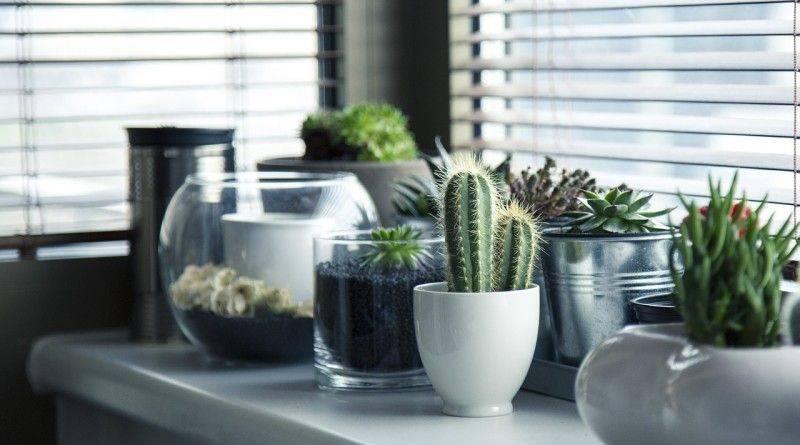
To care for cacti at home, sodium or halogen lamps are suitable. Sufficient power - from 300 to 500 watts. It is optimal for lighting fixtures to have a reflector housing. This will allow you to concentrate the light on the plant.
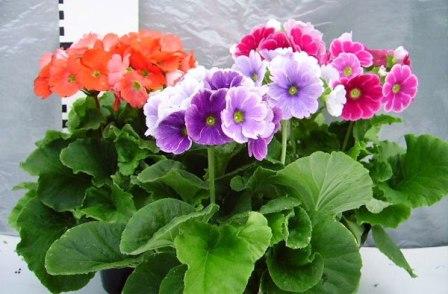 You may be interested in:
You may be interested in:In the center of the light spot - ideal conditions for plants of small height, young growth, and on its edges - higher cacti.
Air humidity
For stable and proper flowering at home, care for cacti involves ensuring optimal humidity. Experienced breeders say it should be low. During the growing season, you can put out, especially if the weather is wet. In order to exclude the development of diseases, the plant is pre-treated with a solution of fungicides.
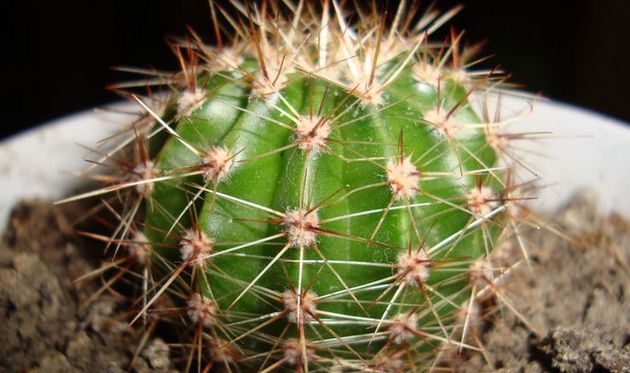
When and how to water
Caring for cacti at home necessarily requires knowledge of how to properly water the plant. The exact amount of moisture is determined by the following factors:
- variety;
- conditions of detention.
Abundant watering is needed in those instances that are contained in a room with low humidity and, at the same time, high temperature. howwater correctly shown in the photo.
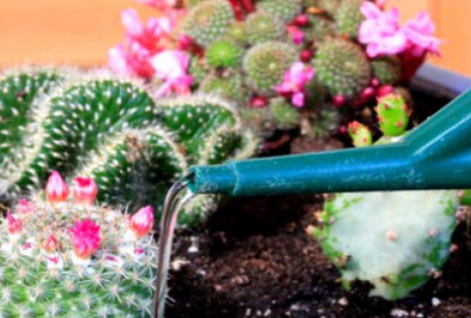
In summer, it is recommended to water cacti daily, exclusively in the morning. This will allow the plant to completely absorb water, eliminate the likelihood of developing diseases. If the plant is grown in a small pot, it is necessary to spray at least once every two days.
There are rules that should be followed when determining the time of watering:
- The first watering with the onset of spring is carried out as soon as young thorns and patches of fresh skin appear on the plant.
- From the first days of September, watering is significantly reduced.
Between November and March, most cacti enter a dormant period. Therefore, the soil should be wetted no more than once a month and in small portions.
- Water consumption is reduced in cacti during the illness.
- When breeding cacti in a greenhouse, it is necessary to monitor the temperature regime. If the thermometer reflects lower than + 10 ° C, watering should be stopped.

A sign of excess moisture is the appearance of vertical cracks on the surface of the stem. Naturally, cacti are able to store water, but the possibilities for doing so are limited.
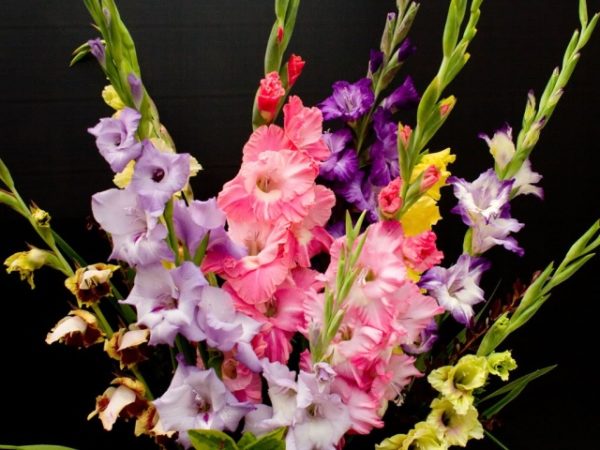 You may be interested in:
You may be interested in:Do I need to feed cacti
Opinions of scientists and breeders regarding whether to fertilize cacti differ. Some are convinced that succulents, which grew using top dressing, in their characteristics are significantly inferior to those that were not added fertilizer.
Others say that naturally plants are provided with the necessary supply of nutrients, which is enough for the entire growing season. Accordingly, additional feeding is not required. As practice shows, the truth is somewhere in between.
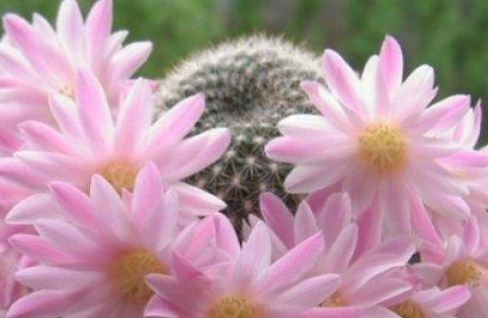
There are rules for correct feeding:
- Fertilizers are not applied at a time when the plant is preparing or has already entered a state of winter dormancy.
- Cacti, which for some reason are in a depressed state, it is impractical to feed. The root system is so damaged that nutrients are not fully absorbed.
- You can not use top dressing immediately after transplantation and during the rooting period.
- Fertilizing should not be too frequent. This can provoke rotting of the soil, the appearance of pests.
- Only those cacti that are planted in acidic soil should be fed. Against the background of an excess amount of lime, fertilizer application can lead to the fact that the plant growth will stop.
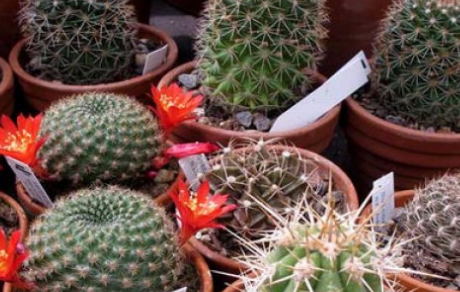
The first feeding after the end of the winter dormancy period occurs at the beginning of spring. This allows you to increase the power of the root system.The most effective is sodium humate, humic acids, potassium salt. The procedure is recommended to be performed either in the evening or on a cloudy day, in order to avoid getting burns.
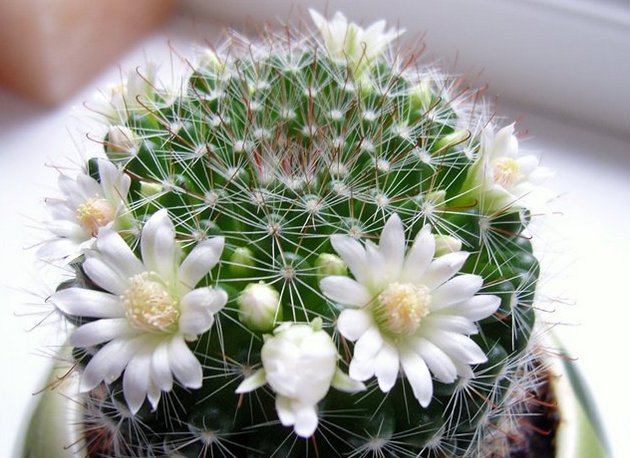
Organic fertilizer options are best suited for ripsalis and epiphyllum. These types of cacti are recommended to be watered once every 7 days with a solution of ammonium nitrate. Proportions - 1 g of substance per 1 liter of water.
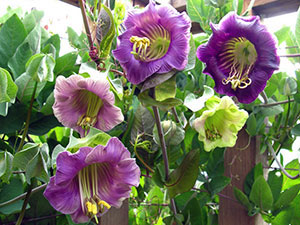 You may be interested in:
You may be interested in:Pot selection
The size of the landing tank is important. Most often, cacti are sold in small pots, so it is recommended to transplant them immediately after purchase. When choosing, they are guided by the size of the plant. If it is small, respectively, and the capacity should be small. Roots, if they braid over a lump of earth for a long time, can begin to rot.
The use of clay pots for growing cacti has both advantages and disadvantages. Their main feature is the porosity of the walls. Accordingly, moisture evaporates quickly. Additionally, this process is affected by the humidity of the surrounding air, the degree of illumination.
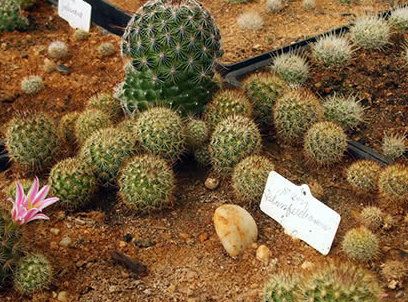
When water evaporates, especially if it is hard, a white coating saturated with lime forms on the walls of the pot. This leads to alkalization of the soil and the further death of the root system. It is easy to solve this problem - it is enough to use the settled water.
In addition to clay pots for growing cacti, plastic pots are also actively used. Their advantage is the smoothness of the walls, due to which they are easy to wash and prepare for reuse. Evaporation through the walls is completely excluded. But in the case of inexperienced gardeners, this advantage easily turns into a disadvantage.
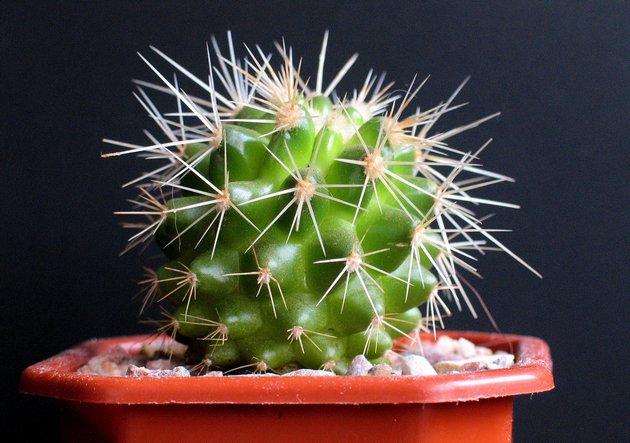
When watering plants in plastic containers, ⅓ of the volume of water that is consumed in the case of using clay pots is required. Accordingly, with insufficient experience, it is easy to waterlog the soil. This will cause root rot.
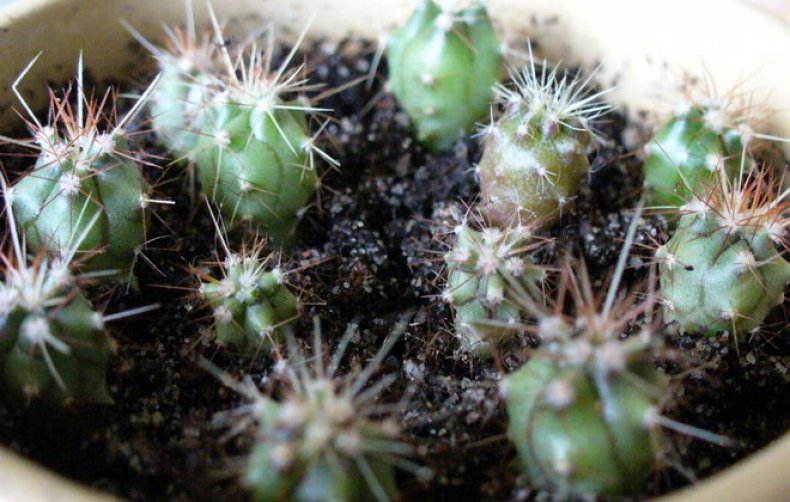
In plastic pots, the risk of getting the root system of sunburn is high. In addition, under the influence of the sun, the capacity is destroyed more quickly.
Transplanting adult cacti
The procedure is recommended to be carried out exclusively in the spring. But first, it is important to make sure that the plant has begun active growth, and the existing pot has become cramped. A few days before the transplant, you should stop the main element of cactus care at home - watering. This will help to shake off the ground easily to remove it from the roots. The plant can prick strongly, so before taking it out, it is wrapped with several layers of paper or fabric.
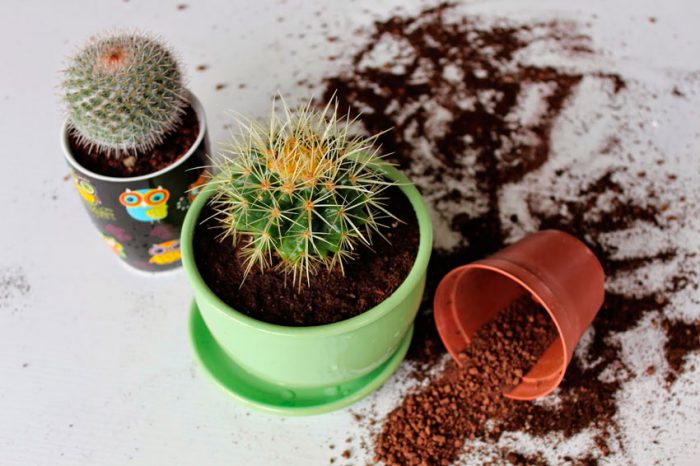
The new pot should be sized so that the roots completely fill its entire inner surface. The bottom should cover the drainage layer. This is followed by a small amount of substrate, plant and soil residue. The base of the stem cannot be deepened into the soil, otherwise it will begin to rot.

For cacti, it is better to choose earthen mixtures, which include a leaf mixture, river sand, peat and charcoal. To avoid mistakes in the preparation, it is better to purchase the finished mixture.
The video shows in detail the procedure for transplanting cacti. This will help novice cactus breeders avoid any problems.
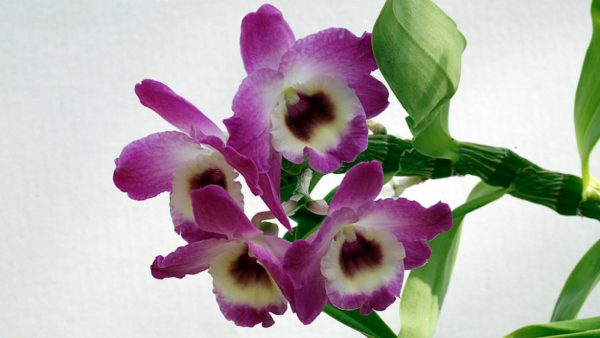 You may be interested in:
You may be interested in:Growing problems
The main difficulty that inexperienced gardeners may encounter is poor plant growth. This can happen for a number of reasons:
- lack of nutrients;
- lack of light;
- use of low temperature water for irrigation;
- frequent change of location;
- violation of the terms of transplantation.
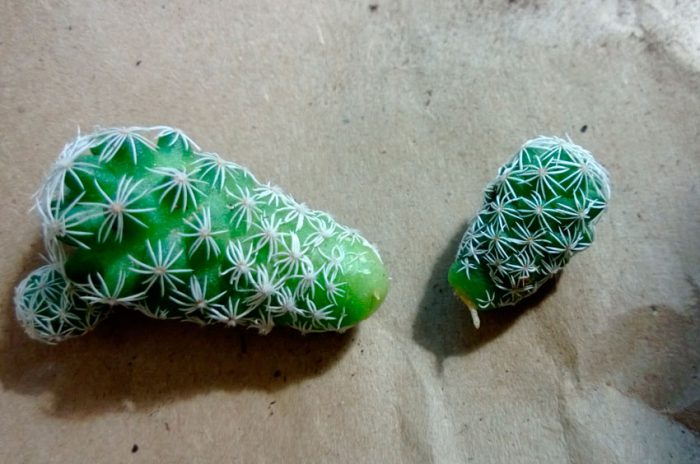
You should also protect cacti from drafts.
Diseases and Pests
Both novice and experienced breeders of cacti equally face the problem of the appearance of pests and signs of diseases on plants. The reasons for its development include:
- weakening of the plant;
- insufficient lighting;
- excess or insufficient watering;
- soil depletion;
- violation of the temperature regime of the content.
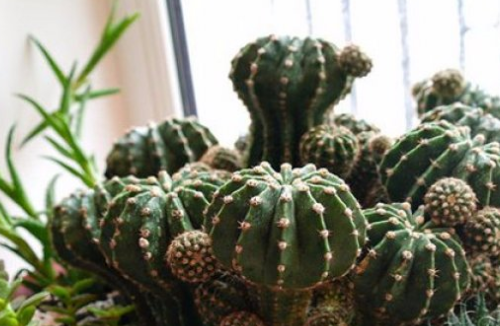
Among the pests that are most often found on cacti is the spider mite. It is easy to recognize its appearance by the small size of cobwebs on the stems, dry spots of brown color. If timely measures are not taken, the plant cannot be saved.
To combat the pest, two types of chemicals are used - contact and systemic. The choice is determined by what phase the tick was detected on. Processing is carried out either in the evening or on a cloudy day.
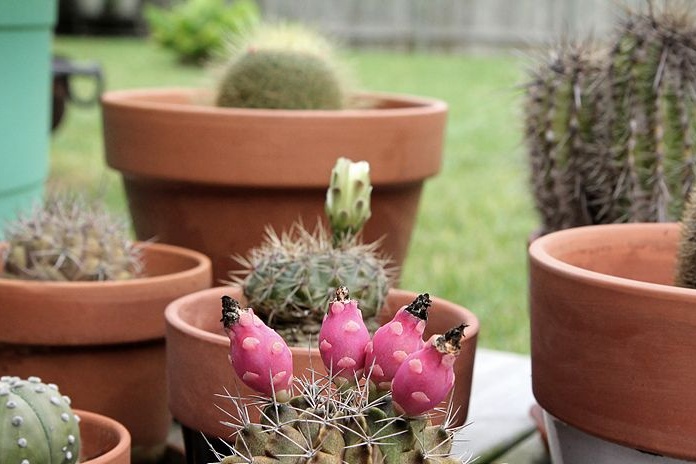
Another pest is the mealybug. Like ticks, it sucks out the juice, which gradually leads to the death of the plant. The most effective control method is spraying with a contact chemical. It is necessary to capture all nearby succulents.
Root mealybug is an insect the size of which does not exceed 1-3 mm. Parasitizes on the roots of a cactus. Slowing growth, as well as flowering, can indicate infection. Cope easily with contact chemicals.
Among the diseases, the leading position in prevalence is occupied by dry and wet rot. They are caused by mushrooms.
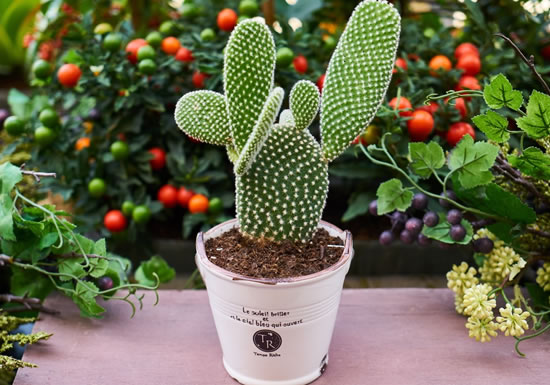
The causes of wet rot are excessive and stagnant moisture. The risk is especially high in the cold season, as well as if transplant rules are violated. You can save the plant by cutting the diseased areas of the roots, then it is heated in hot water, allowed to dry and transplanted into fresh, treated soil.
Prevention of root rot is the first spring and the last before winter watering with a light pink solution of potassium permanganate.




 10 beautiful annuals that bloom all summer
10 beautiful annuals that bloom all summer Sow in the ground, without seedlings: 10 beautiful and unpretentious flowers
Sow in the ground, without seedlings: 10 beautiful and unpretentious flowers Platicodon planting and outdoor care
Platicodon planting and outdoor care Hosta - planting and care in the open ground in the Urals
Hosta - planting and care in the open ground in the Urals